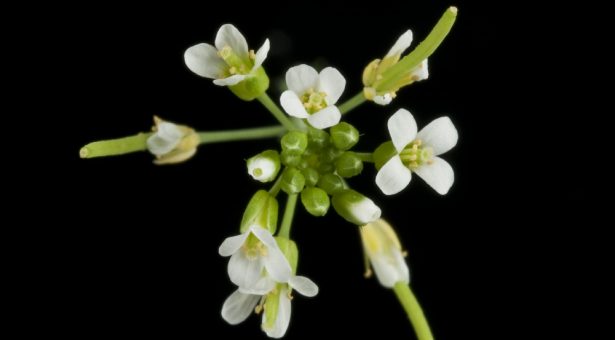Arabidopsis; the (not so) humble weed – Part 1

Depending on the type of person you are, if someone described you as having “no particular virtues or uses” it may make you pretty determined to prove that person wrong and become unequivocally useful.
While we cannot be sure of the background motivations of a non-sentient cress-like weed, this sequence of events aptly describes the story of Arabidopsis thaliana. Arabidopsis is an unassuming member of the brassica family, which has had an immeasurable impact on the study of genetics, and was thus described by English botanist William Curtis in his 6 volume work Flora Londinensis (1777-87).
Had Curtis been alive to see the impact this humble weed has had, perhaps he would have hesitated in confining Arabidopsis to the compost heap.
In this 3-parter we tell the fascinating story of a weed you may have hauled out of your garden without a second thought.
Part 1 – A model organism
Throughout science, researchers use model organisms which are extensively studied to understand specific biological processes, with the expectation being these discoveries can shed light on the workings of other organisms.
The archetypal and best-known model organism is the guinea-pig, thus the colloquial phrase; ‘to be a guinea-pig’. Other model organisms include mice, zebra-fish and arabidopsis, which possesses many qualities which make it a successful model organism.
Firstly, Arabidopsis is small and (certainly compared to many other high-profile models) low maintenance. With greenhouse and lab space in research institutions at a premium, it is of huge economic advantage to be able to grow more organisms per square metre.
Arabidopsis also rapidly produces large numbers of offspring enabling scientists to see comprehensive effects of their interventions very quickly. Each of Arabidopsis’ numerous seed capsules contain 20-30 seeds and it has a 4-5-week generation time. It is no wonder, therefore, that many scientists would forgo the patience required for breeding tomatoes and maize (which take up to 4 and 11 months to mature respectively) and choose to study Arabidopsis instead.
Furthermore, Arabidopsis has the ability to both cross-fertilise and self-fertilise. As such, scientists can reap the rewards of both reproductive strategies and a whole line of identical Arabidopsis plants can be produced from just one individual. Plus, if any harmful deleterious mutations should arise, these can be promptly bred out of the strain.
This ability is not shared with many other members of the brassica family such as cauliflower, mustard plants and brussels sprouts. However, the genetic proximity to these more ‘useful’ organisms does give scientists the opportunity to apply knowledge gained from Arabidopsis to plants we can eat.
Finally, just as the mutation-prone DNA of mice increases their usefulness in cancer research, the genes of Arabidopsis have also been key to its success as a model organism. If an organism has a small genome, it is much quicker and simpler to reveal the bases that comprise the chromosomes through DNA sequencing and use this information to identify and manipulate particular genes.
With just 5 chromosomes and an estimated 135 million base pairs, Arabidopsis’ genome is dwarfed by that of tomatoes (12 chromosomes and 900 million base pairs) and maize (10 chromosomes and 2.3 billion base pairs). Consequently, Arabidopsis was the first plant to have its genome fully sequenced, a factor which accelerated its rise to prominence as the primary model organism for plant research.
